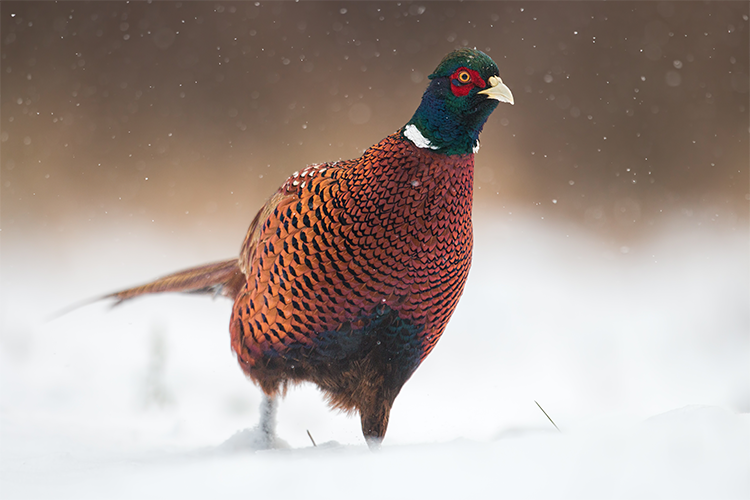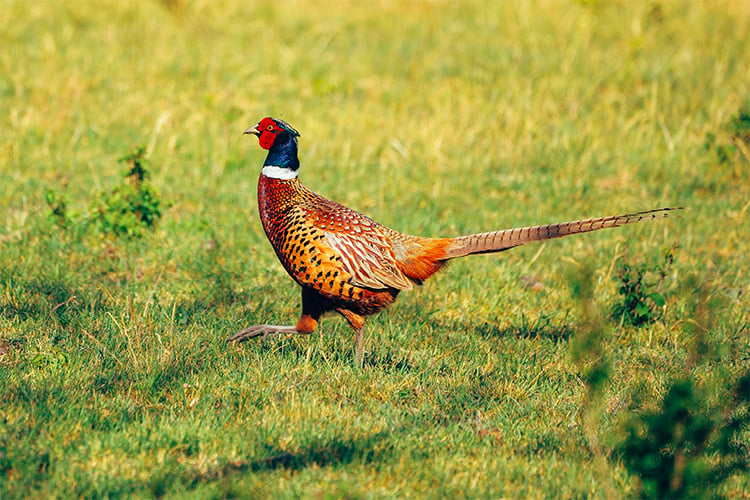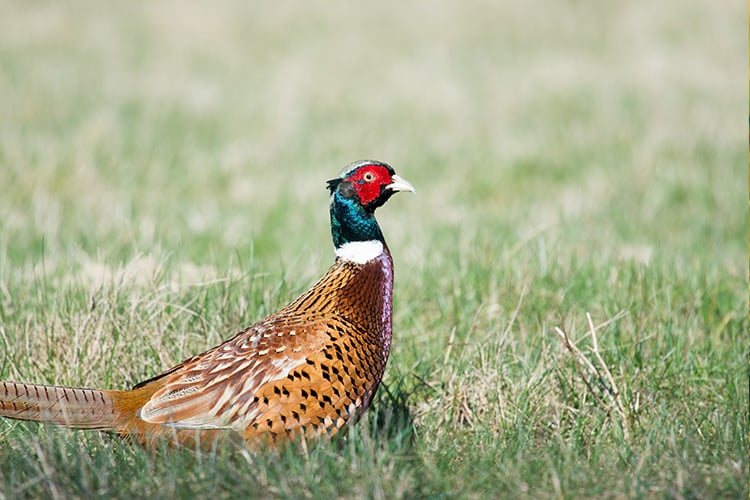Species: Pheasant
Latin Name: Phasianus Colchicus
Average Speed: 38-48 mph
Wingspan: 28-34 inches
Shooting Season: Pheasant Shooting season runs from the 1st of October – 1st February in Great Britain. In Northern Ireland, the Pheasant shooting runs from 1st October – 31st January.
PHEASANT Description
The pheasant is not native to Britain but to Asia, it has a long history of residence as a gamebird elsewhere in the world including the UK. There is some debate over the success of various possible introductions dating back to the Romans, but it is generally agreed that pheasants were common by the 15th century.
The common Pheasant is one of the worlds most hunted birds and it has been introduced to many areas purely for that reason. They are reared and released in huge numbers on commercial estates and the most common type of Pheasant on these estates are the Ring-necked, Michigan blueback, Blacknecks and Bazanty due to their qualities including differentiating flying abilities and their willingness to stick to their home environment without straying.
Driven Pheasant shooting days normally consist of 8 to 10 guns standing in a shooting line, while birds are driven over the guns by teams of beaters and dogs. The dogs are then used to find, flush and retrieve shot birds whom which are to be collected for the counting. The retrieving dogs consist of retriever types such as Labradors and spaniels and the occasional pointer breeds.
PHEASANTs In the wild
The adult male is 60-89cms in length with a long brown striped tail which accounts for almost 50 cm of its total length. They really are a truly beautiful looking bird with bright gold barred plumage with fiery copper-red and chestnut brown plumage. The iridescent shine of the greens and purple feathers really do capture your attention. The soft feathers of the rump that are usually a sultry blue and finer in texture but allow for decent coverage to the rest of the plumage. The head is bottle green and blue with a distinctive red wattle and behind the eyes on the back of the head are two ear-tufts which help which allow the Pheasant to be more alert in its surroundings.
The female (Hen) are much less vibrant in colour with a mottled brown plumage and measuring 50 – 63 cm long and including a tail of around 20 cm very much like the juvenile birds whom which don’t start to show signs of mature feathers until around 10 weeks of age.
Common Pheasants nest under hedgerows or dense cover solely on the ground in scrapes lined with grass and leaves. In some instances, they may wish to nest within straw and haystacks or even use an old nest to rear their young. The pheasant produces a clutch of around 8-15 eggs some as many as 18 but more commonly 10-12. The incubation period is about 22-27 days and the chicks stay with the Hen for several weeks yet leave the nest when they’re only a few hours old. Incredibly after hatching its impressive of how quick they grow, flying after only 12-14 days and resembling adults by only 15 weeks of age.
Contact us
Think you would like to experience a Pheasant shooting holiday? You can contact our expert shooting team leader, Peter Collingsworth, on 01603 407596 or email via peter@sportquestholidays.com who will be able to help find the perfect trip for you. Also, make sure to visit our YouTube channel for up-to-date videos on shooting holidays from around the world.
Shoot straight,
Peter











